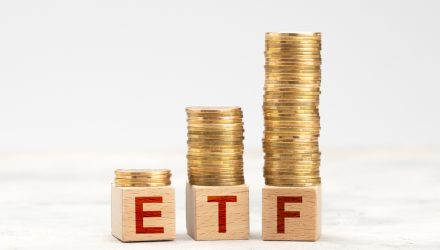Advisors looking to exit their fixed income positions should think twice, at least when it comes to the WisdomTree Floating Rate Treasury Fund (USFR), which brought in $1.12 billion in net inflows in April alone and over $2 billion in total inflows in 2022.
Many of the more traditional allocations within fixed income have proved to be problematic in the current environment of high inflation and rising rates. Kevin Flanagan, head of fixed income strategy at WisdomTree, explains on a call with ETF Trends that TIPs are problematic because they are adjusted for trailing CPI and therefore are tied to inflation, while short duration, which tends to lean heavily into credit, suffers when spreads widen.
“When you’re talking to your client as an advisor, the last thing they want is to have a conversation about is why is that rate-hedged product you sold me producing negative returns,” Flanagan explains.
For advisors and investors looking for a fund that can potentially provide rate-hedging for portfolios, the WisdomTree Floating Rate Treasury Fund (USFR) is a popular choice in the current market environment. The fund capitalizes on the use of floating rate notes by the U.S. Treasury and can be an excellent option for investors looking to limit the amount of credit risk, but still capture higher yield potentials in rising rate environments.
The Benefits of Floating Rate Treasuries
WisdomTree believes that floating rate debt is an important bridge between long-maturity, fixed-rate Treasury bonds and short-maturity Treasury bills. By investing in floating rate Treasuries, holders are paid out quarterly and the amount paid is based on a rate that resets daily in reference to a weekly rate. It can be a good option if Treasury bill yields are rising because it provides the opportunity for greater compensation over a fixed rate bond.
Another benefit to floating rate is that price volatility can be somewhat lessened by the daily resets when compared to fixed income bonds. Treasury floating rate notes are a good option when the yield curve is flat or inverted.
“What we’re seeing, we saw this in the last rate hike cycle and we’re seeing it now as well: the three-month T-bill tends to move ahead of the Fed meeting, so it’s not waiting for the Fed to raise rates 50 basis points,” Flanagan explains. “If you actually look at the yield for USFR right now, I think it’s right around 80-85 basis points. The top end of the Fed funds rate is 50 basis points; you’re already 30-35 basis points ahead of that and the Fed hasn’t done a thing.”
USFR seeks to track the Bloomberg U.S. Treasury Floating Rate Bond Index, which measures the performance of floating rate notes of the U.S. Treasury and contains floating rate notes with two-year maturities and a minimum outstanding amount of $1 billion. The index uses a rules-based strategy and is weighted by market cap. The index excludes fixed-rate securities, Treasury inflation-protected securities, convertible bonds, and bonds with survivor put options.
USFR carries an expense ratio of 0.15%.
For more news, information, and strategy, visit the Modern Alpha Channel.








